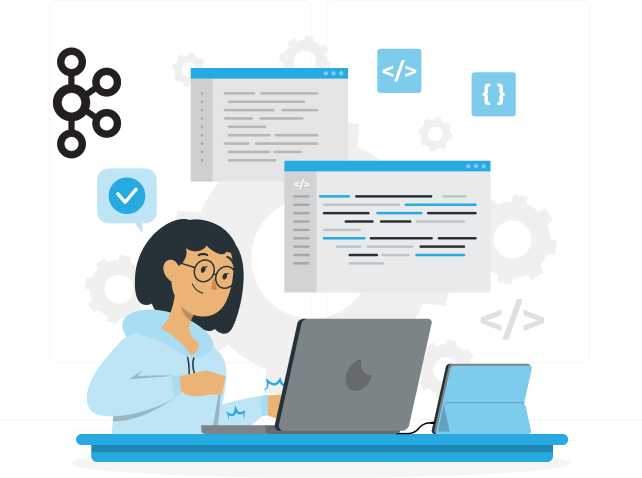Success in the fast world of software development will primarily come from managing software releases and beta testing to meet user expectations. This is a general guide into the details about software release management, beta testing, and how these elements go into the larger context of the release life cycle. We further discuss case studies that support examples of successful implementations of these processes.
Software Release Life Cycle: An Overview
The software release life cycle has major phases through which a product in hand undergoes from its genesis to the final deployment at the user end. For this, each phase needs to be undertaken with total care and dedication so as to make the final result robust, user-friendly, and according to market standards.
1. Planning
Planning is regarded as the base of a software release process. Thus, key activities include planning for:
- Defining Objectives: Clearly defining what the software is supposed to do.
- Scope Definition: Determining the features and functionalities to be included in the release.
- Timeline Creation: A realistic schedule that outlines milestones and deadlines.
- Resource Allocation: Identifying the people and tools needed to complete the task.
For example, a bank interested in enhancing the digital banking experience may plan for a smoother user experience and faster processing.
2. Development
During this development phase, the programmers write the code as planned in the planning phase. Some of the most critical aspects of this stage include:
- Coding Standards: Guidelines that provide best practices in ensuring good quality and maintainable code.
- Version Control: A tool like Git is utilized to manage modifications and different versions of the code.
- Unit Testing: This process requires a test of individual modules and ensures that they will behave as expected when they will be combined.
The story of Slack is such where they first developed the intranet product to first use as their in-office communication application before publishing their product on the free web. Alpha testing involves major unit testing for the goal of reliability.
3. Alpha Testing
- Alpha testing: A type of internal testing used by the developers themselves, or by specially recruited testers in the company. Generally this includes:
- Functional Testing: All features must work.
- Integration Testing: Different components of the software must interact.
- Performance Testing: How well does the software work under given conditions.
Example: A tech startup would do alpha testing in-house with its development team, catching bugs before releasing to external testers, for its mobile application.
4. Beta Testing
After alpha testing, the product is released to the **beta testing** stage, that is, released to the outside world, but within a limited and controlled section of users who test its real-world functionality. A beta testing can be two types:
Open Beta Testing
In open beta testing, anyone interested can participate, providing feedback on usability, functionality, and performance. For example, Discord often releases beta versions of new updates to its software through a public test build (PTB), allowing users to try out new features before they are rolled out widely.
Closed Beta Testing
Closed beta testing is conducted with those who are specifically interested. The usability, functionality, and performance can be communicated back to the developers as a result. For example, Discord commonly publishes the beta version of new updates for its software through its public test build (PTB), enabling users to test new features before these are rolled out widely.
Closed beta testing has just a few users. In this case, people have to test the available features or functionalities. The whole process, therefore allows for controlled feedback and aimed improvement of functions according to the experience of users. This method is adopted, for instance, by Google, with their products. This includes Gmail or Google Docs. New features, after testing among a group of select users, spread.
5. Release Candidate
A release candidate (RC) is a version of the software that has passed all the previous stages of development and testing but is still subjected to validation from beta testers or stakeholders before it is officially released as GA or General Availability. This stage includes:
- Final Bug Fixes: Those critical issues which have arisen during beta testing.
- Stability Checks: Ensuring that the product is stable and performs well under the expected conditions.
For instance, an organization can send to selected customers a beta copy of its software so it could receive the last impression of customers before launching.
6. General Availability (GA)
GA means the item is through all phases of testing and is open to be used by anyone from the public. Important parameters include:
Rolling Deployment Strategy: Design on how to release the package of software to users could either be phased roll outs or full rollouts.
Marketing Campaigns Awareness creation of the product to reach as many users as possible and ensure it is adopted.
Preparing Support Teams: This is making sure that when the users encounter problems, the support teams are all set to handle them regarding the product.
For example, Microsoft released Windows 10 after several beta test phases before its general release.
Why Beta Testing is Crucial?
Beta testing is an integral part of the process followed in releasing software. These functions include the following:
Real-Life Feedback
Beta testing allows developers to obtain insight from actual users interacting with the product under normal operating conditions. Such feedback is invaluable in identifying issues on usability and understanding user needs.
Identifying Bugs
Many bugs can only come up when the users are running the software in different environments or configurations. For instance, during beta testing of its iOS application, Spotify realized that it had compatibility issues with certain devices that were not detected in earlier tests.
Usability Improvements
Beta testers may provide some feedback that shows where user experience can be improved. Suggestions about the design of the interface or functionality of features can make a huge difference before the launch.
Market Validation
It will engage users during the earlier stages of feature or product development, which helps assure market demand before a launch at a full scale is made. Knowing how those potential customers will interact with it can feed into future dev and marketing efforts.
The Role of Software Release Procedures
Effective procedures are indispensable for the successful management of software releases. They generally encompass:
Version Control Management
Changes tracking and handling multiple versions of code is a must to keep everything in order all through development. Version control systems such as Git enable teams to collaborate effectively while at the same time preserving the history of changes made over time.
Documentation
Comprehensive records of all changes made at each phase ensure transparency and accountability in teams. Documentation should comprise:
- Change logs
- User manuals
- Technical specifications
- Test cases
This information becomes invaluable during future updates or troubleshooting efforts.
Quality Assurance Checks
Quality Assurance is an essential aspect of ensuring that all parts of the product qualify for the standards when working towards the development process. Normally, quality assurance can be divided into the running of automated tests and manual reviews or a combination of both.
Deployment Planning
Planning on how the software will be released and available to the users calls for strategic considerations such as:
- Infrastructure readiness
- User training
- Communication plans about updates or changes
Key Differences Between Alpha and Beta Testing
Alpha and beta testing are two stages of testing software. The difference between the two is crucial for effective software release management:
| Aspect | Alpha Testing | Beta Testing |
|---|---|---|
| Conducted by | Internal team | External users |
| Environment | Controlled (lab/stage) | Real-world production |
| Purpose | Identify critical bugs | Gather user feedback |
| Timing | Before public exposure | After alpha, before GA |
Types of Questions to Ask During Beta Testing:
In order to make beta testing very effective, it is required to ask relevant questions to the participants for meaningful feedback:
1. Usability Questions
How intuitive is the user interface?
Are you able to complete the tasks on your own without any support?
2. Functionality Questions
Are there bugs observed during your usage?
Were there some features that are not functioning as expected?
3. Feature Evaluation
What features were the most useful?
Do you find that there are missing features?
4. Comparison Questions
How do you compare this product in relation to similar tools which you have used?
If you were recommending this based on your experience?
These questions give you your qualitative data to make appropriate adjustments for your final touches prior to release.
Case Study in Software Release Management and Beta Testing
Slack’s Beta Testing Journey
Prior to the tool ever becoming a communication tool as it is so widely seen today, Slack did very extensive closed beta testing involving small businesses’ use with the tool as a kind of feedback avenue. That allowed them earlier on to realize usability-related issues.
Main outcomes have been:
Gain insights based on user preferences that impacted the design.
Identified critical bugs in order to do not let such bugs spoil the launch process in mass public.
Slack is an example of what can be achieved with beta testing, bringing effectiveness to the readiness of a product using real-world feedback of targeted users.
Conclusion
Effective software release management, coupled with comprehensive beta testing, assures products meet user expectations and work well in real-life situations. Understanding each stage of the release life cycle-from alpha through beta-helps teams prepare for successful releases and reduce risks related to software failures.
Adding structured procedures such as version control, documentation, quality assurance checks, and planning for deployment to your workflow will help you deliver higher-quality products more consistently. In today’s fast-moving world of technology, you can be sure that you will have to keep in line with best practices of software release management to maintain your competitive edge.
This will equip you with the ability to design robust products that are not only functional but experientially worthwhile, providing end users with satisfaction and loyalty. If you are a business looking to enhance your software release management and testing process, we are here to help you. Let’s get started!

Start a Project with Ajackus











































































